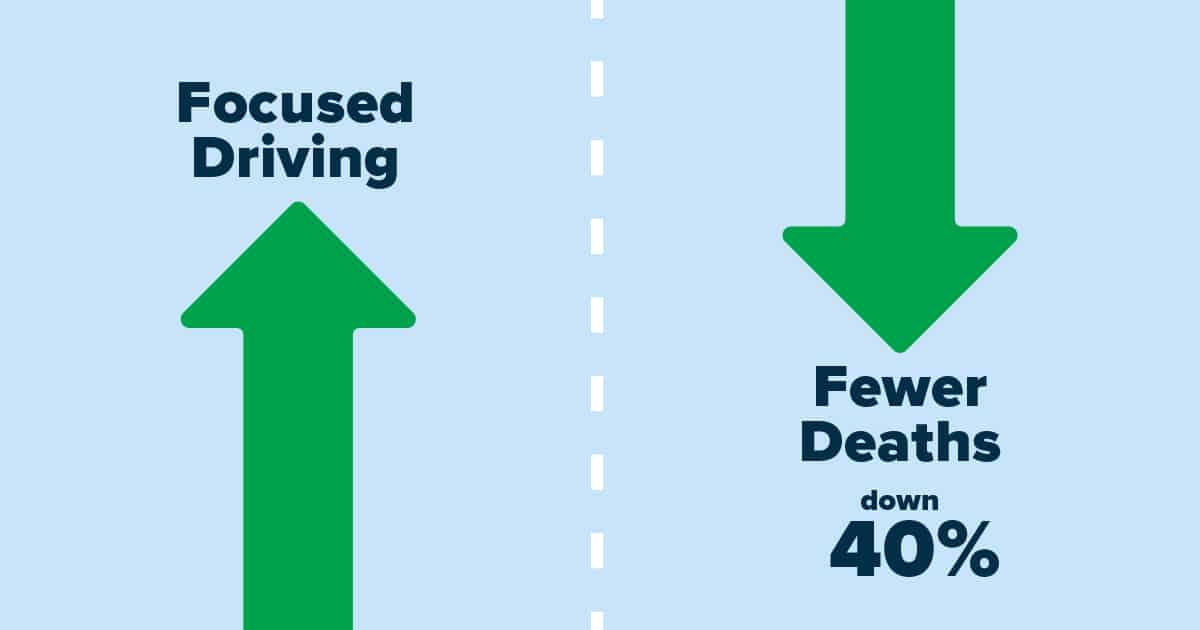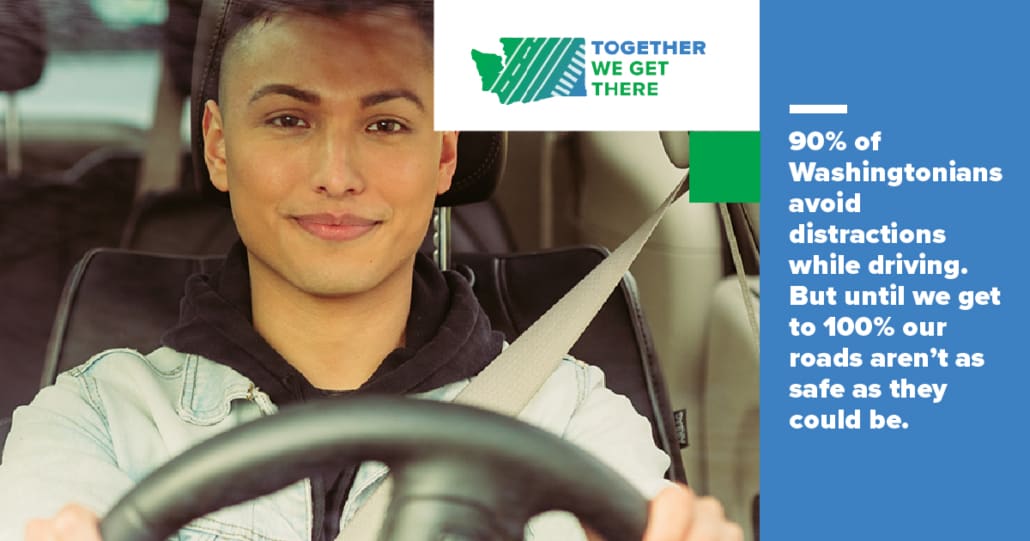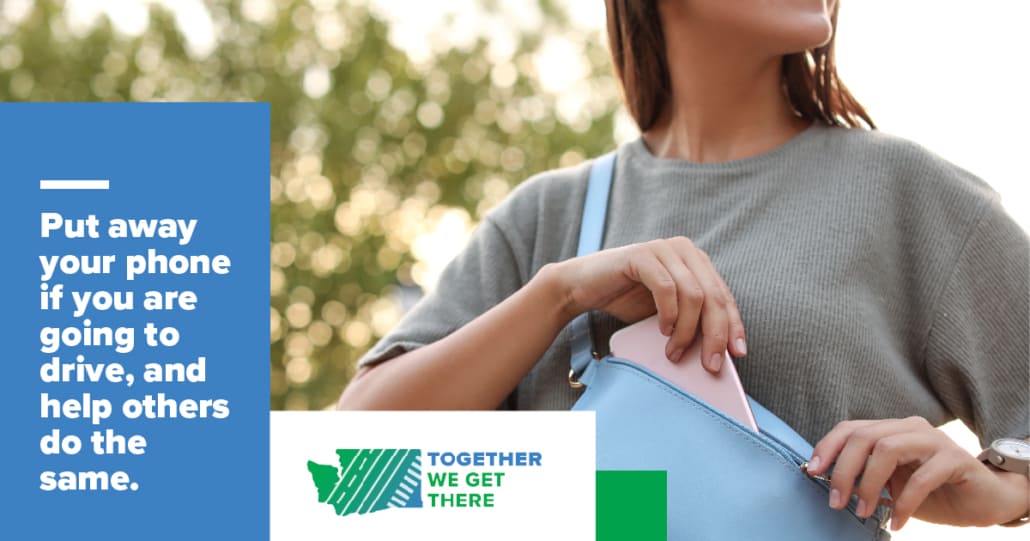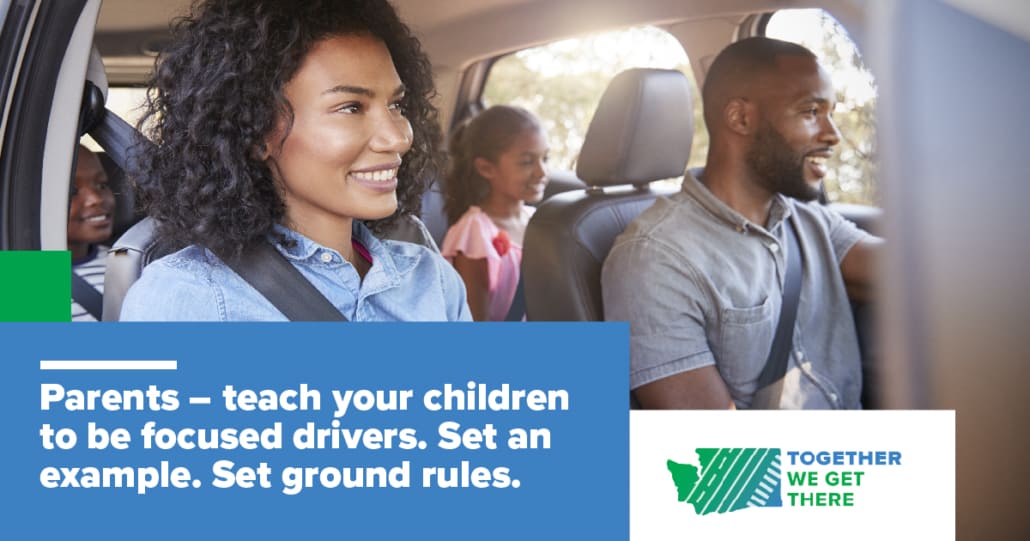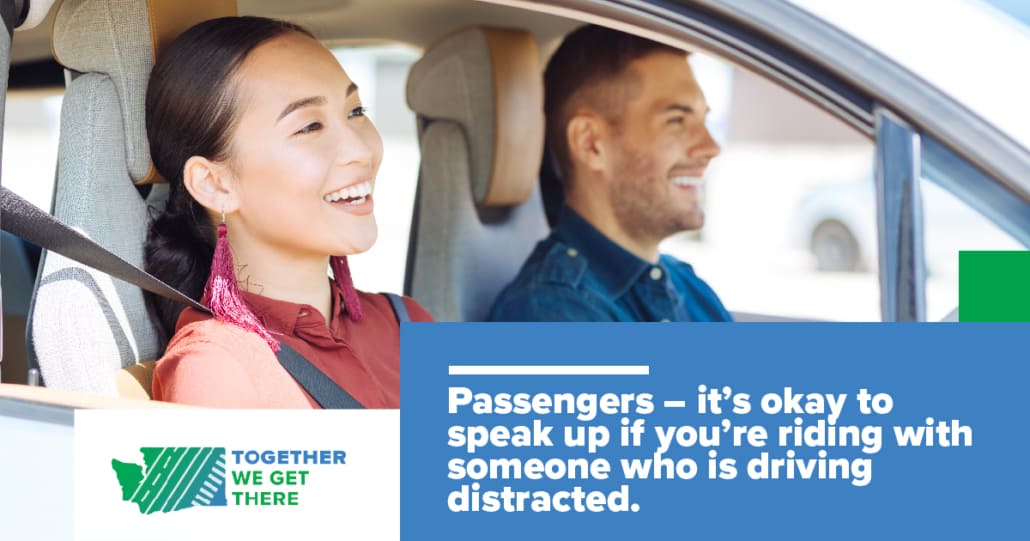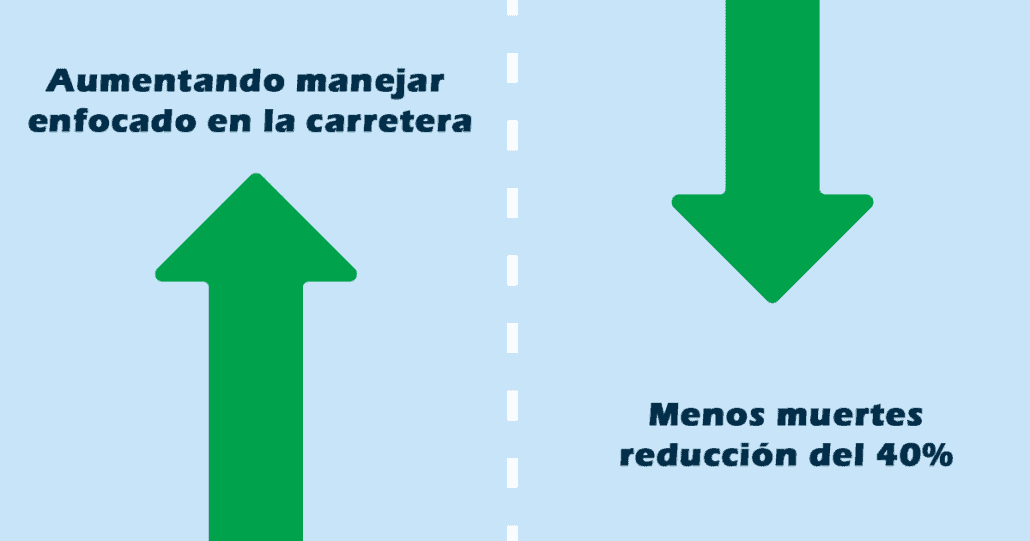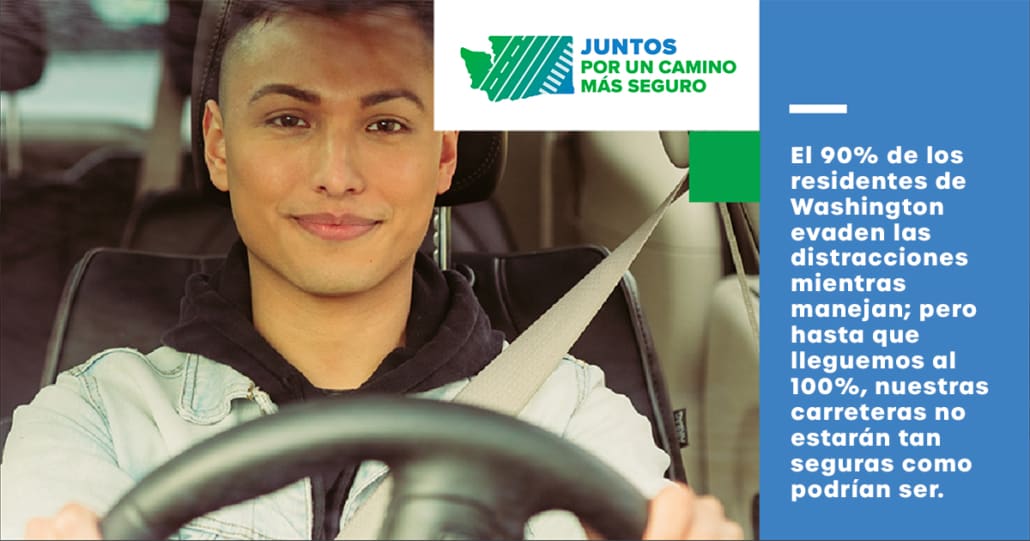Focused Driving Overview
Washington’s statewide distracted driving rate rose 9.3% in 2022, according to the Washington Traffic Safety Commission’s (WTSC) Annual Distracted Driving Observation Survey. This is an increase from 6.9% in 2021.
To help reduce driver distraction, state and local law enforcement agencies across Washington will be running a series of high visibility enforcement patrols using both officers on foot to identify distracted drivers, and patrol cars to intervene and ticket distracted drivers. The enforcement patrols run from April 3rd through the 10th.
Join us in reinforcing the fact that most Washington drivers remain focused while driving and off their phones. Please use these materials as you communicate throughout the month on distracted driving.
- Washington’s distracted driving law states that it is against the law for Washington drivers to use hand-held devices while they are driving or stopped at stoplights. This includes all electronic devices, including phones, tablets, laptops, and video games.
- We want to thank the vast majority of Washingtonians for avoiding distracted driving. 9 out of 10 Washington drivers avoid using phones when they’re driving, and that improves traffic safety for everyone. But until we get to 100%, our roads aren’t as safe as they could be.
- WTSC, state, and local law enforcement agencies are marking the beginning of Distracted Driving Awareness Month in April by deploying extra distracted driving l patrols across the state from April 3-10 to watch for distracted motorists.
- The number one thing everyone can do to help is put their phones away while they are driving and encourage others to do the same.
- Choosing to focus only on driving is a choice that improves safety for drivers, passengers, bicyclists, and pedestrians.
2022 Annual Distracted Driving Observation Survey findings:
- Washington’s statewide distracted driving rate rose to 9.3% in 2022. This is an increase from 6.9% in 2021.
- The use of hand-held devices is the leading type of distraction across all road types, including city streets, county roads, and state routes, followed by using a device to the ear and other distractions.
- Distracted driving is highest on city streets and lowest on state routes. This may be because drivers are more likely to engage in distractions at lower speeds.
Tips for drivers to avoid distracted driving:
- Turn your phone off, set it to “do not disturb,” or put it in airplane mode.
- Put your phone physically out of reach, like in the glove box, backseat, or trunk – or give it to a passenger.
- Schedule 10 minutes before you hit the road to take care of things that could distract you like phone calls, eating, or setting up navigation or music for your drive.
- For longer trips, build in breaks every two or three hours to use your phone, change playlists or have a snack.
Tips for passengers to intervene with distracted driving:
- If you’re riding with someone who is distracted while driving, ask them (politely) to put away their phone. It might feel a little uncomfortable at first, but it’s important. Here’s how to do it:
- Show them you care by being clear that your driver’s safety is important to you.
- Stay calm and remain clear and direct, without getting angry or agitated.
- Be confident and acknowledge the dangers of distracted driving directly.
How to talk to family members:
- Set clear expectations in your family about how to handle cell phones and other distractions on the road.
- Always put your phone out of reach when you drive to help your family members pick up the habit. Remember: no matter how old your kids are, they’re learning to drive from your example!
- Enjoy the ride and surroundings rather than letting people use their phones or game systems in your car.
- When driving with your kids, talk with them about how to be a focused driver and use examples from your surroundings to quiz them on driving safely.
- Avoid calling family members or friends when you know they’re driving.
When drivers can use their phone:
- Drivers can use their phone if it is set to hands free (such as using Bluetooth) and they can start use by a single touch or swipe without holding the phone (i.e. cancelling directions on a dash-mounted phone)
- Drivers can use their phone if they are parked and out-of-the-flow of traffic.
- Drivers can use their phone if they are starting GPS or music before driving.
- Drivers can use their phone if they are contacting emergency services.
Penalties for distracted driving:
- The first violation results in an E-DUI ticket that costs drivers $136. If the driver incurs a second ticket within five years, the fine increases to $234 for repeat offences. These citations will be reported to insurance companies.
There is also a Dangerously Distracted secondary law that allows law enforcement to give an additional $99 citation if you are pulled over for another traffic violation caused by distraction
Sample Social Media Posts in English
The following are sample graphics and related content that we encourage you to use on your organization’s social media. Feel free to adapt for use on your website or customized emails too.
Social Media Posts in Spanish
Social Media Animations
These HD videos are sized at 1080 x 1080px for use on social media feeds.
Release
March 27, 2023
Washington Traffic Safety Commission to Increase Distracted Driving Patrols
Statewide survey shows distracted driving rates increased from previous year’s results
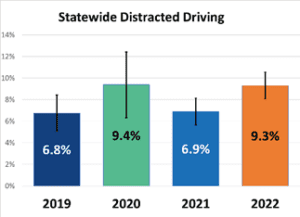 According to WTSC’s 2022 Distracted Driving Observational Survey, distracted driving rates increased to the same rate observed in 2020
According to WTSC’s 2022 Distracted Driving Observational Survey, distracted driving rates increased to the same rate observed in 2020
OLYMPIA, Wash. – Washington’s statewide distracted driving rate rose to 9.3% in 2022, according to the Washington Traffic Safety Commission’s (WTSC) Annual Distracted Driving Observation Survey. This is an increase from 6.9% in 2021.
In the survey, 90% of drivers in Washington said they do not drive distracted, but 2022’s increase in distracted driving remains significant, climbing an additional three points over the previous year’s rise. In 2021, 116 people were killed in crashes involving a distracted driver, a number which is likely underreported. Distracted driving was a factor in 21% of fatal crashes during 2017-2021.
As part of ongoing efforts to minimize distracted driving, and to mark the beginning of Distracted Driving Awareness Month in April, WTSC is holding a distracted driving law enforcement period from April 3-10, with law enforcement agencies statewide conducting emphasis patrols to watch for distracted motorists.
“Driving distracted is one of the top risk factors for fatal car crashes in our state,” said Erica Stineman, Communications Manager, WTSC. “The nearly 10 percent of drivers who drive distracted may not see bicyclists or pedestrians or react to traffic that stops suddenly. To keep everyone safe, we need to keep our focus on the road and off our phones when driving. We should also set good examples for our friends and family, educating them on the importance of staying focused on the road and not our phones when driving.”
Distracted driving is a violation of Washington’s Driving Under the Influence of Electronics (E-DUI) law, which states drivers may not hold cell phones or watch videos while they are driving, stopped in traffic or at a stop light. Hands-free use is limited to a single touch device. The first violation results in an E-DUI ticket that costs drivers $136. If the driver incurs a second ticket within five years, the fine increases to $234.
The use of hand-held devices is the leading type of distraction across all road types, including city streets, county roads, and state routes, followed by using a device to the ear and other distractions. Distracted driving is highest on city streets and lowest on state routes. This may be because drivers are more likely to engage in distractions at lower speeds which increases risk of serious injuries and fatalities for pedestrians and bicyclists as well as drivers and passengers.
“We want to thank the vast majority of Washingtonians for avoiding distracted driving,” said Janine Koffel, Distracted Driving Program Manager, WTSC. “The number one thing everyone can do to help is put their phones away while they are driving and encourage others to do the same. 9 out of 10 Washington drivers avoid using phones and other distractions when they’re driving, and that improves safety for everyone. But until we get to 100%, our roads aren’t as safe as they could be.”
To reinforce the importance of focused driving, more than 100 law enforcement agencies across Washington will increase patrols focused on identifying distracted drivers on the road. Officers in patrols cars will work with “spotters” on foot at intersections and other locations where drivers are more prone to distraction by looking at their phones.
Drivers can visit the WTSC’s website to learn the dos and don’ts of the E-DUI law. Materials are available in seven languages.
###
Videos
Using short videos is a popular way to reinforce messages important to instilling safe driving practices and behavior for our teen drivers. Feel free to embed in your social media posts, email messages, or on your website.

